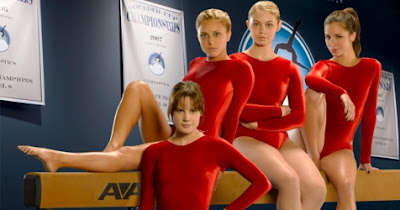Watterson, Bill. Calvin and Hobbes. Andrews McNeel, 1987. Paperback $12.99, ISBN 978-0836220889.
What’s it about?
Calvin is a rowdy, wildly imaginative 6 year old boy who lives with his mother, father, and tiger Hobbes. To most people, Hobbes is a stuffed animal, but Calvin and Hobbes know better!
Find out more:
Ever had an imaginary friend? Six-year-old Calvin does, but everyone only thinks he’s imaginary. Calvin’s best friend appears to be a large stuffed tiger, but Calvin knows he’s the real deal. Hobbes is the more practical and sage of the duo, although he’s prone to sass and sneak-pounce attacks on Calvin. Most strips focus on Calvin and Hobbes, although there are great secondary characters, like Calvin’s frazzled parents, Calvin’s goody-goody neighborhood nemesis Susie, and idiotic school bully Moe. In later collections, readers enjoy an increasing number of Calvin’s alter-egos. In this first collection, we’re introduced to Spaceman Spiff, whose life and death struggles parallel Calvin’s real-life adventures (such as tackling a playground slide).
Calvin and Hobbes is the first collection of Watterson’s popular comic strip. The premise is simple and delightful. Ordinary events are exaggerated and comedic through the eyes of Calvin and his incredibly over-active imagination. In one Sunday strip (which contains twice as many panels as a daily strip) Calvin’s fear of baths makes perfect sense: when Calvin sits down in the tub, the bubbles form a large, monstrous fiend that tries to drown Calvin. His only recourse is to drain the tub. The last panel features Calvin’s cross mother: “don’t tell me he’s letting the water out already!” Behind her, the wet, naked, Calvin scowls “believe it, lady.” Just as the characters in the Peanuts strip evolved, Calvin and Hobbes look slightly different and more developed in Watterson’s later strips. Nevertheless, his artwork is expressive and masterful.
Genre: Humor, satire
Reading level: 4th grade
Interest level: Grades 4-Adult
Subjects: Imagination, Family, Misbehavior, Political & philosophical satire
Read-alikes:
Holm’s Babymouse
Spires’ Binky series
Shultz’s Peanuts
Ketcham’s Dennis the Menace
Awards:
2-time Reuben Award Winner “Outstanding Cartoonist of the Year” (1986 & 1988, nominated in 1992)
Series information:
Something Under the Bed is Drooling (1988)
The Essential Calvin and Hobbes (1988)
The Calvin and Hobbes Lazy Sunday Book (1989)
Yukon Ho! (1989)
The Authoritative Calvin and Hobbes (1990)
Weirdoes From Another Planet (1990)
The Revenge of the Baby-Sat (1991)
Scientific Progress Goes “Boink” (1991)
Attack of the Deranged Mutant Killer Monster Snow Goons (1992)
The Indispensible Calvin and Hobbes (1992)
Homicidal Psycho Jungle Cat (1994)
The Days are Just Packed (1993)
The Calvin and Hobbes 10th Anniversary Book (1995)
There’s Treasure Everywhere (1996)
It’s a Magical World (1996)






















